Wenge: the “new Brazilian Rosewood”?
There is an ongoing search for the “new Brazilian” – and there are some great-looking woods out there that have tonal qualities on a par with Brazilian. African Blackwood is probably the most talked about at the moment. It is a dalbergia, and therefore a “true” rosewood. It grows in such a way that its logs will yield very few sets suitable for guitar building. So, like Brazilian Rosewood, it is wildly expensive.
A few months ago I was talking to Ervin Somogyi: a luthier whose guitars I love. We were discussing various woods and generally geeking out. Following a tip off, he had produced a guitar body out of Wenge (pronounced weng-ee). Now I’ve made a few bass necks out of Wenge, and I know how hard it is.
The four neck stringers in this six string bass are Wenge. Truth is, it cost me a fortune in saw blades to cut them. So I knew that the wood was very dense, but I had never considered building a guitar from it. This was because although Wenge has a dark, rich colour, it has almost no figure.
This guitar body he showed me was just an unfinished soundbox. No neck attached. I tapped the back and was astonished by the sound that emanated. It is difficult to describe sounds in words, but this one was a clear, sustained, bell-like ring. I don’t profess to predict the sound of a guitar just from tapping a piece of wood, but I do know what I am looking for. A “lively” sound. Proof that the wood has the ability to produce a note. If it can do this, then the chances are that you will get a good guitar sound from it. This guitar definitely had that – and some more besides.
In the case of Wenge, the properties of the wood that make it look boring are the very properties that make it sound great. It has very tight, very straight grain, like the grain found in softwoods. This uniformity means that it lacks the character, say, of a wild curly piece of maple. However, Wenge’s uniformity makes for a great-sounding guitar.
So I decided to experiment. I went out and bought the most perfectly quarter-sawn piece of Wenge I could find, joined it up to make a back plate and thicknessed it so that it would be extremely thin. It’s a hard, stiff wood, so I can get it pretty thin; this should allow the back to move a lot. This will add even more to the sound.
Now I’m thinking I’ll put some inlay in the back, to liven this guitar up a bit before it goes on sale. I like my guitars to look a little exotic and, although I think this one will be perfect for the tone junkies out there, I also want to make it as striking as possible.
Here I’m gluing braces into the back. I want this back to work as a single unit, hence the asterisk-style bracing. As usual, I’ll be carving these braces to shape once they are on the guitar. It’s so much easier to detect what influence your shaping is having on the guitar if they are attached to it when you work on them.
I’ll let you know how it sounds when it’s complete. Obviously, for an independent view, you’ll have to come by and try it yourself. The way the woods are sounding when I tap them, I think you’d probably better bring your cheque book if you do…
